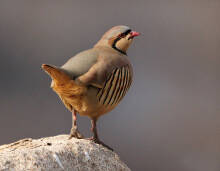
The scientific name of the black-faced grouper is Alectoris philbyi, and the foreign name is Philby's Partridge. Action is very alert and careful, often run along the hillside or up the mountain in case of danger, never run down the mountain, running speed is extremely fast, but also good at hid...
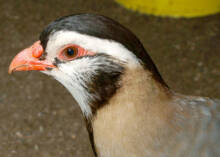
Arabian chicken scientific name Alectoris melanocephala, foreign name Arabian Partridge, sex like cluster. Action is very alert and careful, often run along the hillside or up the mountain in case of danger, never run down the mountain, running speed is extremely fast, but also good at hiding. Also...
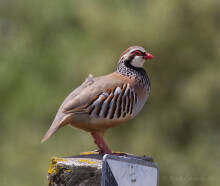
European grouper (scientific name: Alectoris graeca), foreign name Rock Partridge, pheasant family Grouper genus of medium chickens, there are 4 subspecies.The European grouper likes to flock. Action is very alert and careful, often run along the hillside or up the mountain in case of danger, never...
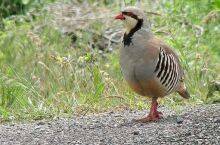
Alectoris chukar (Chuckar, Chukar, Chukar Partridge) is a medium-sized pheasant with 14 subspecies.Grouper is a resident bird. Active during the day, the sex likes to cluster, sometimes during the day to the farmland near the hillside to forage, after the shock straight to the mountain quickly run....
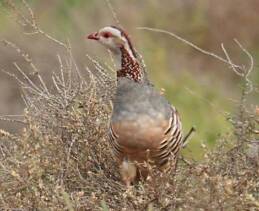
North African rock chicken scientific name Alectoris barbara, foreign name Barbary Partridge, sex like cluster. Action is very alert and careful, often run along the hillside or up the mountain in case of danger, never run down the mountain, running speed is extremely fast, but also good at hiding....
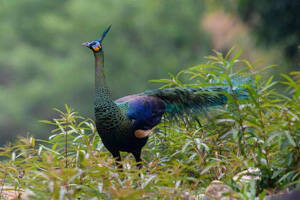
Congo Peacock (Afropavo congensis) : Congo peafowl, Congo Peacock, no subspecies. Congolese peacocks defy the general rules of the bird world, with females being more beautiful than males.Congo peacock is an elusive mysterious bird, because living in Africa's dark, human and animal rare rainfore...
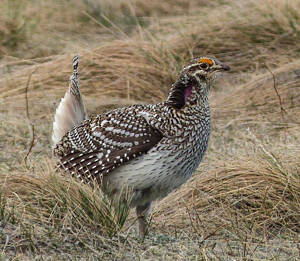
The Sharp-tailed prairie Grouse (Tympanuchus phasianellus) is known as sharp-tailed grouse and has seven subspecies.The pintail prairie grouse is a forest bird, usually hiding in the branches of the pine tree, sometimes people walk nearby, still not moving: in the underforest brush slowly, when frig...
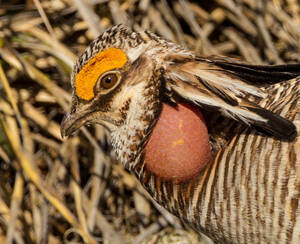
The Lesser Prairie-chicken (Tympanuchus pallidicinctus) has no subspecies.The range of the little grass fowl is up to 5 square kilometers for males, and 2.3 square kilometers for females. The fragmentation of local habitats by farming and human construction has put considerable pressure on the range...
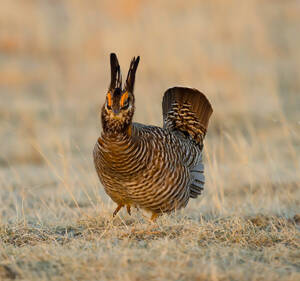
The Prairie grouse (Tympanuchus cupido), also known as Greater Prairie-chicken, has three subspecies.Prairie grouse usually live in a relatively small area of a few hundred acres to cover and meet their food and water needs. If food is in short supply, they can also fly several miles for food. It is...
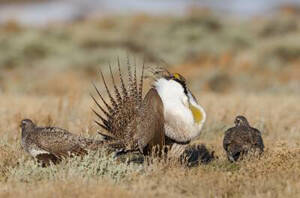
The Sage grouse (Centrocercus urophasianus), also known as Greater Sage-grouse without subspecies, is the largest grouse in North America.Sage grouse do not fly much except up and down trees. Because of their clumsy body, they flap their wings violently when they first take off, and make a ge-ge-ge...
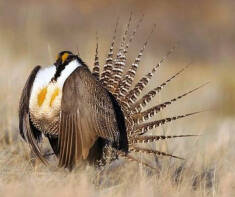
The Lesser sage Grouse (Centrocercus minimus) is Gunnison Grouse, no subspecies.The little sage grouse does not fly much except up and down trees. Because of his clumsiness, he fluttered violently when he first took off. When flying, the rise speed is slow, and after reaching a certain height, the w...
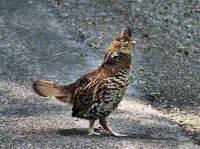
The Ruffed Grouse (Bonasa umbellus) has 15 subspecies.Shawl hazel chicken is a non-migratory bird, is a forest bird, the breeding season is not in groups, other seasons more into small groups of activities, there are 3-4 or 6-7 a group, there are more than 10. Foraging begins at dawn. When looking f...
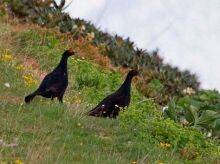
Tetrao mlokosiewiczi, the Caucasian black lyric chicken, is active in the morning and evening in large forest clearings, forest edges and sunny grass or shrubs, and in the rest of the forest by falling trees, shrubs or grass clearings. It mainly roosts in larch trees at night. In winter, they often...
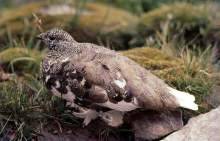
The White-tailed Ptarmigan (Lagopus leucurus) has five subspecies.The winter white-tailed thunderbird lives in tundra, tundra scrub forests and rocky meadow areas near the North Pole and is very hardy. Like to be active in the woods, sometimes also to the farmland. Most of them move in groups except...
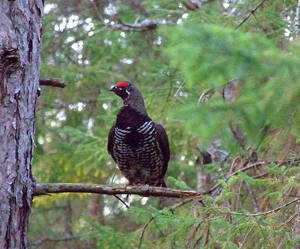
The Fir-tree chicken (Dendragapus canadensis), also known as Spruce Grouse, has six subspecies.Fir-tree chicken activity peaks in the early morning and late evening, pecking at grass. In the summer, this solitary activity on the ground, in the winter may gather in small groups of up to 30 individual...
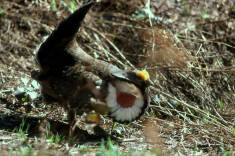
The blue Grouse (Dendragapus obscurus), also known as Dusky Grouse, is a relatively large grouse with four subspecies.Blue grouse tend to form smaller groups in the warmer months and larger groups in the winter, spending most of their time at the top of trees feeding on needles or pine seeds. In sum...
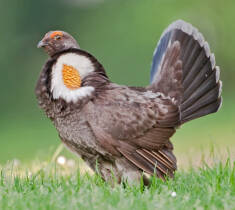
The Sooty Grouse (Dendragapus fuliginosu) is a relatively large grouse with four subspecies.The black grouse is an early adult. These birds live on the ground or in the trees in winter. In winter, it eats mainly the needles of fir and Douglas fir, but occasionally hemlock and pine needles; In the su...

Ortalis wagleri, Rufous bellied Chachalaca, eats banana fruits, coffee berries and leaves, and occasionally pecks at insects.International Union for Conservation of Nature (IUCN) Red List Protection Level: No Threat (LC).Protect wild animals and eliminate wild meat.Maintaining ecological balance is...

The Plain Chachalaca, Ortalis vetula, eats banana fruits, coffee berries, and leaves, and occasionally pecks at insects.Listed on the International Union for Conservation of Nature Red List of Threatened Species (IUCN) for 2020 ver 3.1 - Not Threatened (LC).Listed in Appendices I, II and III of the...
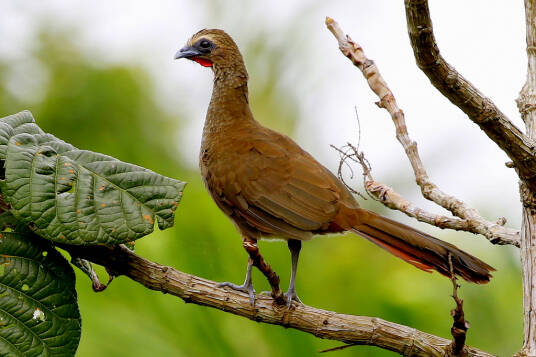
Ortalis superciliaris, or Buff-browed Chachalaca, feeds mainly on banana fruits, coffee berries, and leaves, and occasionally pecks at insects.International Union for Conservation of Nature (IUCN) Red List Protection Level: No Threat (LC).Protect wild animals and eliminate wild meat.Maintaining ecol...